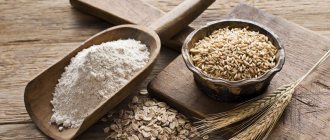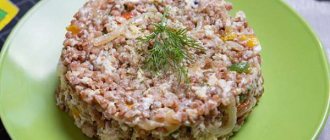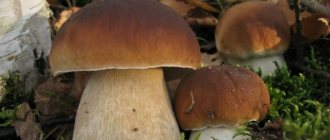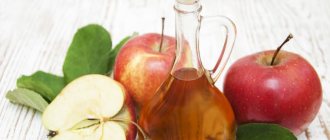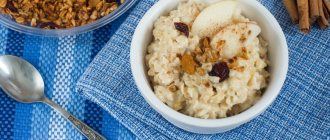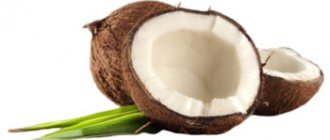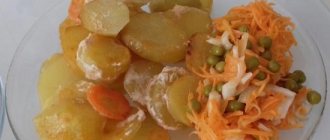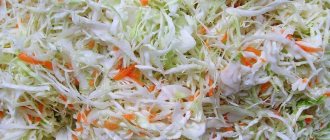The diet of a healthy person necessarily contains nuts in various variations. Among them, hazelnuts stand out. High nutritional value and characteristic sweetish-delicate taste make it an ideal product.
Today, more than 15 varieties of hazelnut are known. The Italians were particularly successful in developing new varieties, inspired by the beneficial properties, taste and aroma of the fruits of the walnut tree.
general characteristics
Hazelnut is the fruit of a Lombard nut or large hazel. The nut is surrounded by a plus (cup), which protects it from external influences. The core makes up up to 60% of the fruit's mass, the rest of the weight falls on the cup-shaped shell. The fruits are grown in Mediterranean countries due to the most comfortable climatic conditions.
The plant can reach up to 10 m in length. The walnut tree is tall, with dense gray branches. It produces dense, glandular-pubescent annual shoots. The leaves of the walnut tree take on a round or oval shape. The average leaf size is 12x10 cm. The average size of walnut tree fruit is 20x15 mm. The top of the nut is several times longer than the length of the fruit. It is tubular, downward, with wide, pointed teeth at the end of the base.
Content:
- general characteristics
- History and geography of the product
- Useful properties of hazelnuts
- Therapeutic effect of the product
- Cosmetic effect of the product
- Use in cooking
- Recipes with added nuts
- Contraindications
- Product storage rules
Description of culture
Hazelnut grows as a tree or spreading shrub, about 7 m high. Thin, flexible branches are covered with brown-brown bark. The foliage is bright green, the plate is wide, jagged along the edge, reminiscent of the shape of the body of a bream, which led to the Russian name hazel. Male flowers are collected in an earring-shaped inflorescence, female flowers are located nearby in the buds of the bracts.
A mature infructescence contains 3–5 nuts, protected by a green sheath (plush) with a torn, jagged edge. The edible seed, except for the plus, is protected by a woody brown shell. The shape of the fruit, depending on the variety, is round, heart-shaped or round-oval. Size more than 1 cm in diameter.
Bred by crossing several species of wild hazelnuts, the cultivated form received the best qualities: resistance to cold, diseases and pests, as well as large fruit. Today, the nut is grown in Europe, Russia, North America and Asian countries, in areas where the climate is mostly temperate, although there are varieties resistant to low temperatures.
Did you know? Hazel wood is valued in the furniture industry and in inlay. The material has a natural shine, flexibility, pliability in processing and a characteristic pinkish-brown tint.
History and geography of the product
The history of the product is varied and shrouded in mystery [1]. There is a version that it was hazelnuts that saved humanity from famine when most plants died from glaciation during the Ice Age.
Archaeologists find traces of walnut tree cultivation in every corner of the world [2]. Hazelnuts began to gain popularity during the ancient period. The Romans called hazelnuts the “blessed tree” and considered them a symbol of prosperity, family happiness, health and inner strength. Virgil points out the importance of nut fruits when he describes the hidden power and benefits of hazelnuts in one of his poems. Later, spreading to Northern Europe and Rus', the nut became a talisman against dark forces.
Spain played an important role in the cultivation of hazelnuts. Local authorities obliged every citizen to plant and cultivate a hazel tree. This is how many years of selection of the best hazelnut varieties took place, which were maximally adapted to the external environment.
Modern territorial centers of hazelnut cultivation:
- southeast Europe;
- Mediterranean countries;
- Caucasus;
- Asia Minor.
Chemical composition [3]
| Nutritional value (calculated in grams per 100 grams of product) | |
| Squirrels | 15 |
| Fats | 61 (Saturated fat – 4.5; polyunsaturated fatty acids – 8; monounsaturated fatty acids – 46) |
| Carbohydrates | 17 (Dietary fiber – 12; sugar – 5) |
| Water | 5 |
| Calorie content | 628 Kcal/100 g |
Vitamin composition
| Vitamins | Vitamin content in milligrams (per 100 grams of nuts) |
| Beta-carotene (A) | 0,01 |
| Thiamine (B1) | 0,64 |
| Riboflavin (B2) | 0,11 |
| Niacin (B3) | 2 |
| Folic acid (B9) | 0,068 |
| Ascorbic acid (C) | 1,4 |
| Tocopherol (E) | 25,5 |
Macronutrients
| Macronutrient | Macronutrient content in milligrams (based on 100 grams of nuts) |
| Potassium | 720 |
| Calcium | 170 |
| Magnesium | 170 |
| Sodium | 3 |
| Phosphorus | 300 |
Microelements
| Microelement | Microelement content in milligrams (based on 100 grams of nuts) |
| Iron | 3 |
| Iodine | 0,002 |
| Cobalt | 0,0123 |
| Manganese | 4,2 |
| Copper | 1,1 |
| Zinc | 2,44 |
| Fluorine | 0,017 |
Features of use
The total amount of hazelnuts eaten in a balanced diet for an adult is 40-50 g. The daily intake of nuts for adolescents is 20-30 g.
Note! With an increase in physical or mental stress, the number of nut kernels in the diet is increased by 10-15%. It is recommended that children introduce nuts into their diet after 1 year of age.
It is best to rely on the scale readings when using such high-calorie foods. If they are not nearby, the nuts are counted individually. One fresh hazelnut kernel weighs about 1 g. The daily requirement of 50 g is 50 nuts (kernels).
If you bought nuts in shell, the weight of the kernels will be about 42-44% of the total weight. In this case, 114 nuts will be equal to the daily requirement.
Recipes for healthy eating
Tomato and radish salad
- 1.1 g Protein
- 3.9 g Fat
- 4.1 g Carbohydrates
- 52.1 kcal
10-15 min.
- #bell pepper
- #vegetarian dish
- #dietary
- #for vegans
- #green onions
- #low calorie
- #dinner
- #vegetables
- #vegetable dish
- #cucumber
- #olive oil
- #tomato
- #radish
- #salad
- #dinner
Other recipes
Useful properties of hazelnuts
Fact: hazelnuts have 3 times more calories than bread, and milk 8 times.
The nut contains 60% oil. The oil consists of glycerides and several types of acids, which prevent the growth of cholesterol levels in the blood, protect the walls of blood vessels from damage and disease, and support the growth and development of the entire body [4].
Vitamin E, which is part of the composition, helps fight cancer and serves as a powerful preventive agent against cancer, pathologies of the heart and muscular system [5]. Calcium makes bones and teeth stronger, zinc stabilizes the production of sex hormones, potassium regulates the activity of the nervous and muscular systems [6].
Hazelnuts provide excellent energy to the body due to their high calorie content [7]. Considering the percentage of protein content (about 19%), hazelnuts are an excellent option for daytime snacks, addition to morning or lunch meals.
The nut contains vital elements that help “build” the human body. It is especially important that hazelnuts be present in the diet of children and adolescents, who need such “building” materials for normal growth and development. Nuts will help develop and strengthen the skeletal system, normalize blood pressure, remove waste and toxins from the body, and strengthen the protective functions of the immune system.
Therapeutic effect of the product
The nut fruit has a beneficial effect on the cardiovascular system. Potassium and calcium included in its composition improve the condition of blood vessels and smooth muscles of the heart, making them more elastic and healthy [8].
Hazelnuts are an excellent helper for anemia and other pathologies of the circulatory system. The nut is used for varicose veins, thrombophlebitis, trophic leg ulcers and capillary diseases.
Using the product you can cope with prostate diseases and increase the protective function of the immune system. Hazelnuts prevent rotting processes in the human body and accelerate the natural cleansing of the liver.
Remember: hazelnuts contain a huge amount of calories, so you should not eat too many fruits. Consider the daily dose of the product and contraindications to avoid health problems.
Experts point to another important property of hazelnuts. The nut contains paclitaxel, which is an anticancer substance [9].
Due to the content of vitamin E and protein, hazelnuts are an indispensable element of a sports diet. This combination promotes rapid growth and development of muscle tissue.
There is a popular belief that the nut helps lactating women produce more milk, prevents gas formation and dissolves stones in the internal ducts of the body.
Vitamins
Hazelnuts contain a large number of different vitamins. Each of them has a beneficial effect on the functioning of the body, and also helps to establish the processes occurring in it. The main vitamins include:
- A or beta carotene;
- group B. Among them: B1 or thiamine;
- B2 or riboflavin;
- B5 or pantothenic acid;
- B6 or pyridoxine;
- B9 or folic acid;
Knowing what hazelnuts contain, the conclusion about the beneficial properties of the product suggests itself. Nutrients affect the functioning of internal organs and systems. These substances can have both positive and negative effects on the human body. To avoid negative consequences, you can consume hazelnuts only in accordance with the permissible daily intake. You are allowed to eat no more than 50 g of peeled kernels per day.
Cosmetic effect of the product
Nut oil is obtained from hazelnuts [10]. The product remains fresh for a long time, does not dry out and is highly valued not only in medicine and cooking, but also in the cosmetics industry. The oil is added to various body, face, hand and hair care products. It can be used either alone or in combination with other plant extracts.
Walnut oil has the greatest effect on hair. You need to rub a few drops of oil into your scalp to get strong, shiny and soft hair.
Use in cooking
Hazelnuts have great culinary potential. Its use can easily transform any dish into a delicacy, and the product itself can be combined with almost all existing food.
Hazelnuts stand out among other varieties of nuts. It has a delicate taste with a barely noticeable sweet note. The texture of the kernel is quite soft, which allows cooks to choose any method of heat treatment.
Please note: the soft texture of the nut can be easily damaged if stored incorrectly or handled carelessly. Buy hazelnuts in shell, carefully checking the integrity of each nut. The product can be stored for no more than 6 months in shell and no more than 3 months in peeled form.
What can you do with hazelnuts:
- fry. The maximum permissible temperature for frying is 75ºС. Hazelnuts should be roasted for no more than 20 minutes to preserve their beneficial properties and high nutritional value;
- pickle;
- sugar;
- combine with sweet (cherry jam) or salty (provencal herb mixture) filling/spice to make an original snack;
- grind into flour or nut butter;
- grind into nut butter;
- prepare halva from nut cake. The cake remains after the product is ground into oil, flour or paste. Hazelnuts are a healthy and waste-free product [11].
Don't limit yourself to just baking and eating raw or roasted kernels. Walnut is an excellent ingredient for vegetable salads, meat and fish dishes. It goes well with soft, salty and hard cheeses. Follow the general KBZHU and try to be sure to add more vegetables or fruits to the dish. With the help of the fiber contained in these products, the body will digest “heavy” foods faster and easier.
Calories after processing
Not all people eat hazelnuts raw. To understand how useful the product is after various heat treatment options, it is necessary to consider how the number of calories changes, as well as the ratio of kbju.
| Hazelnut | Kcal | Squirrels | Fats | Carbohydrates |
| Fried | 703 | 17,8 | 66,1 | 9,4 |
| Dried | 667 | 14,3 | 61,0 | 13,4 |
| Blanched | 629 | 13,7 | 61,1 | 6 |
| In Apple pie order | 590 | 8,6 | 48,0 | 40,0 |
Recipes with added nuts
Culinary life hack: to peel the hazelnuts, you need to put them in the oven for 5 minutes, then roll them in your hands for a few seconds. The skin peels off easily, the fruit gives off a rich smell and acquires a sweet taste.
Italian cookies without flour
We will need:
- hazelnuts – 350 g;
- brown sugar to taste;
- salt – ½ teaspoon;
- egg white – 4 pcs;
- vanilla extract – 1 teaspoon.
Preparation
Grind the nuts into flour using a food processor and place in a large bowl. Beat the whites, add salt and bring the mixture to a strong foam. Gradually add the whites into the nut mixture. Proteins must be introduced slowly so that the mass can “set” correctly. Add vanilla extract and sugar to taste to the resulting mixture. Form the cookies yourself or use special molds. Preheat the oven to 160ºC. Prepare a baking sheet, line it with baking parchment and place the shaped cookies a few centimeters apart. Bake for 30 minutes. After cooking, it is recommended to cool it for 5-10 minutes.
Hot salad of new potatoes, tuna and nuts
We will need:
- boiled potatoes – 500 g;
- hazelnuts – 150-200 g;
- canned tuna in its own juice – 1 can;
- cherry – 6 pcs;
- spinach – 100 g;
- olive oil – 2 tablespoons;
- favorite spices to taste.
Preparation
The preparation process for each ingredient is as simple and straightforward as possible. Mix the finished products in random order, pour in a little olive oil, add your favorite spices and enjoy the taste. It is recommended to serve the salad immediately, while the potatoes are still warm. It is this combination of ingredients that gives a unique taste, aroma and benefits to the body.
Dishes
Hazelnuts are a healthy, nutritious snack and a great addition to salads or desserts. In a healthy diet, it is consumed alone or mixed with dried fruits and other nuts; various sweets and savory snacks with spices are prepared. Hazelnuts are also widely used in the industrial production of confectionery products.
Store-bought sweets
Of all the varieties of sweet products produced by modern manufacturers, the most widespread and in demand is chocolate with nuts. Hazelnut filling is also very popular in chocolate or sugar-coated candies.
chocolate
When making hazelnuts in chocolate, the calorie content of the finished confectionery product is very high, since the nuts contain almost 1.5 times more calories than a pure chocolate bar. In addition, this parameter largely depends on the presence of other components, especially if the manufacturer is unscrupulous and introduces various chemical additives into the composition.
The highest quality products in this category are considered to be products of two brands:
- “Alpen Gold” - chocolate with hazelnuts with a calorie content of 532 kcal/100 g;
- “Milka” - chocolate with hazelnuts with a calorie content of 545 kcal/100 g.
Alpen Gold and Milka chocolates contain natural ingredients: cocoa mass and cocoa butter, sugar, dairy products, soy lecithin and vanillin. The total amount of cocoa is 25−27%, and milk fat is no more than 5%. It is contraindicated to consume such sweets if you are allergic or intolerant to nuts and milk protein. Also, you should not overuse chocolate because of its high calorie content if you are obese or have a tendency to gain weight.
Candy
Industrially produced sweets have a completely different composition. If chocolate is considered a healthy sweet, then candy products are not, since they contain not only natural, but also many chemical ingredients. Mostly harmful additives are present in the filling, although even the chocolate glaze does not have a natural composition.
Of all the domestically produced nut candies, the following are considered the most popular among consumers:
- “Petrovich” - dragee in chocolate glaze from the “Orekhovichi” series from the Ozersky Souvenir factory with a calorie content of 630 kcal/100 g;
- 2 types of candies “Inspiration” from OJSC “Babaevsky Confectionery Concern” - with crushed hazelnuts with a calorie content of 541 kcal/100 g and with whole nuts with a calorie content of 550 kcal/100 g;
- original candies “Babaevskie with cocoa and hazelnuts” with a calorie content of 537 kcal/100 g from the same manufacturer;
- truffle sweets “Amur” with whole hazelnuts, calorie content 570 kcal/100 g from the confectionery.
Important! It should be borne in mind that even trusted world-famous manufacturers add various food additives to sweets, as this is provided for by technology. Despite the harm, they are necessary to provide the appropriate structure and extend the shelf life of the product.
Therefore, if the quality and naturalness of the composition is crucial, then you should purchase healthy sweets or prepare them yourself. This is guaranteed to help you avoid the use of various preservatives, flavors, emulsifiers and other artificial additives, as well as select the desired composition in terms of calorie content, taste and beneficial properties.
Homemade sweets
Using hazelnuts, you can make a wide variety of homemade candies that are an excellent healthy alternative to store-bought ones. These can be toffees, dragees and even the classic - chocolate-covered nuts.
Butterscotch
A simple recipe for chocolate-nut toffees, which are prepared from well-known and affordable candies - baby toffee. To do this, a plate of toffee weighing 350 g is divided into cubes, placed in a small saucepan, and 6 tbsp is poured in. l. cream 10% fat, place in a water bath and, stirring constantly, melt until completely dissolved. Add 50 g of butter, mix and pour into small portioned silicone molds, filling one third of the volume. Then place 1 nut in the middle of each and pour in the butter-toffee mixture, leaving a little space on top for the chocolate. Leave in the freezer for several hours until completely frozen.
After this, melt 20 g of milk chocolate, pour in 1 tbsp. l. cream, stir and let cool slightly. Take the toffee molds out of the freezer and pour the chocolate glaze into each one. Place it back into the freezer and leave until the chocolate hardens completely. Ready toffees are stored in the refrigerator and consumed in moderation, since the calorie content of such sweetness is 381 kcal/100 g, which, although lower than that of natural hazelnuts, is still high for daily consumption.
Dragee
Hazelnut dragee in sugar glaze - delicious homemade instant sweets. To prepare them, first place 200 g of peeled hazelnuts in an oven heated to 180ºC and fry for 3 minutes, and then remove the skin from the hot nuts. Pour 80 g of sugar into a suitable container, pour in 200 ml of water, bring to a boil and cook for 7 minutes. After this, add the nut kernels and mix very quickly. Place the mixture back on medium heat and heat, stirring until the sugar turns into caramel. Pour the dragees onto a baking sheet greased with vegetable fat, separate them individually and leave to cool. 100 grams of sweets prepared according to this recipe will contain 363 kcal.
Chocolate
Real chocolate-nut candies, no different from store-bought ones in appearance and taste, but significantly superior in benefits and naturalness, can be made from hazelnuts and several types of chocolate. To do this, melt 150 g of chocolate in a water bath or in the microwave, grind 30 g of nuts into crumbs, mix both components, add 2 tbsp. l. cream and 1 tbsp. l. liqueur (liquids should be at room temperature).
Mix everything thoroughly, put it in the refrigerator and let it harden for half an hour. At this time, chop another 50 g of hazelnuts into crumbs with a knife. Balls are formed from the cooled chocolate-nut mass, a nut is placed inside each, rolled and rolled in nut crumbs. At this stage, the candies are already ready, but if you wish, you can cover each one with chocolate. To do this, melt 50 g of milk chocolate, cool slightly and dip each ball in the resulting glaze. The finished candies are left in the refrigerator until the chocolate hardens. The energy value of such homemade confectionery products will be 549 kcal/100 g, which corresponds to a similar indicator for store-bought ones. But these will be healthy and completely natural sweets.
Meringue
Meringues are airy cakes that melt in your mouth. They are the same as meringue, but with the addition of hazelnuts. The presence of nuts gives the cakes an unusual taste that is reminiscent of Nuts bars. Meringues are easy to prepare, but require strict adherence to technology. Moreover, to obtain such magnificent cakes you need a minimum set of products.
First, beat 3 egg whites at high speed with a mixer until peaks form. For the process to proceed correctly, all utensils used must be completely dry and the whites must be chilled. To check the readiness of the proteins, turn the bowl over: if the mass holds well and does not drain, then they are ready. After this, switch the mixer to low speed and gradually add 1 tbsp. l. sugar, being careful not to damage the protein structure. If you have no experience beating such a mixture, it is better to replace the sugar with powdered sugar.
Heat the hazelnuts in a frying pan until the skins are dry and begin to peel off easily. The toasted kernels are crushed with the side of a knife, poured into the whites and gently mixed with a spoon. Then put it into a pastry syringe with a wide nozzle and squeeze it out onto a baking sheet lined with parchment in the form of circles. If you don't have a syringe, this can be done using two spoons. Bake in an oven preheated to 100ºC for 15 minutes. After a light golden brown crust has formed, reduce the temperature to the lowest possible and leave the meringues for another 40 minutes. When a more pronounced “blush” appears, open the oven door slightly and leave it in this position to lower the temperature, since such cakes should not be baked in the oven, but dried. After the specified time has passed, the oven is turned off and, if necessary, closed, leaving the meringues inside until they cool completely. The finished cakes will contain 424 kcal/100 g, while they are very light and quite voluminous, so they perfectly saturate even a small portion.
Churchkhela
Churchkhela is a traditional Georgian sweet that is famous for its excellent taste and healthy composition. It is prepared only from natural ingredients, so it not only satisfies hunger well, but also has a beneficial effect on humans.
To prepare such a dessert, 500 g of pre-roasted and peeled hazelnuts are strung on strong threads 25–30 cm long. After this, the mixture is boiled for dipping: pour 2.5 liters of grape juice into a thick-bottomed pan and put on medium heat. Pour 500 ml of the same juice into a separate container and add 25 tbsp alternately. l. flour, stirring the mixture thoroughly each time so that no lumps remain. The resulting solution is poured in a thin stream into the boiled juice, stirring constantly and avoiding the formation of clots.
Boil the juice until very thick, cool slightly and, one by one, dip the nut “beads” into the resulting jelly. Repeat the procedure several times until the mixture is finished, and then hang the churchkhela to dry at room temperature. The dessert will be ready in about a week. 100 g of this product contains 165 kcal. If the taste of the juice seems sour, then you can add sugar during the cooking of the jelly, but then the indicated indicator will increase slightly.
Chocolate nut cookies
Homemade chocolate hazelnut cookies have a simple recipe, a very affordable set of products and excellent taste, but at the same time they have a fairly high calorie content - 459 kcal per 100 grams. The cookies are light and soft, with a pronounced chocolate taste. The specified amount of ingredients yields 9–10 pcs. Therefore, if you need to bake more of this delicacy, you should increase the volume of each component accordingly.
To prepare chocolate-nut cookies, first melt a 90 g bar of dark chocolate in a water bath, add 30 g of butter to it and heat until smooth. In another cup, mix 45 g of sugar and 1 egg, then beat the mixture into a fluffy foam.
Peel 50 g of hazelnut kernels, chop with a knife and lightly fry in the oven or in a frying pan. Mix the cooled chocolate, nut and egg masses, add 50 g of sifted wheat flour. Knead the chocolate dough, which should be viscous and sticky. Place dough circles of not too small diameter with a spoon on a baking sheet lined with parchment at some distance from each other, since the dough will spread a little during baking. Bake cookies at 175ºC for 15 minutes. Take out and cool slightly.
Chocolate mousse
Delicious chocolate-cheese mousse with nuts is prepared in 20 minutes and looks quite festive, so it’s suitable for any event. This is exactly how the authors of the recipe recommend consuming dessert - only on the occasion of a holiday, since it turns out to be very high in calories and contains 523 kcal per 100 grams. But this parameter can be reduced to 412 kcal/100 g if you replace mascarpone cheese with the same amount of soft cottage cheese with the addition of 1 tbsp. l. natural low-fat yogurt.
To prepare, first melt 100 g of chocolate in the microwave. Mash 100 g of mascarpone cheese (or cottage cheese with yogurt) with a fork, adding 1 tbsp. l. powdered sugar. Dry and chop 100 g of hazelnuts with a knife (if desired, you can leave them whole). Mix all the ingredients, add cinnamon or other spices if desired. Leave in the freezer for 10 minutes. Served in tall glasses.
Buckwheat pie
This pie is made from buckwheat flour with fruit and nut additives, therefore, despite the relatively high calorie content of 376 kcal/100 g, such pastries are not only tasty, but also dietary. To prepare hazelnut buckwheat pie, first grind 225 g of nuts in a coffee grinder, pour into a bowl, add 250 g of buckwheat flour, 5 g of cinnamon and baking powder.
Divide 5 eggs into yolks and whites, beat the whites to strong peaks. Mix 200 g of softened butter and 200 g of granulated sugar, then beat with a mixer until fluffy, add the remaining egg yolks and beat again for 5 minutes. Add the nut-flour mixture to the resulting fluffy mass, followed by whipped egg whites.
Wash and cut 3 nectarines into halves, after removing the seeds. Place the fruit pieces in a mold, pour the dough on top and bake for 35-40 minutes in an oven preheated to 180ºC. Carefully remove the pie, cool on a platter and serve.
Contraindications
Nuts are called a “heavy” product due to their composition and calorie content. The daily dose of hazelnuts should not exceed 50 grams. What are the risks of overeating? The substances that make up hazelnuts provoke brain spasms. A person feels a sharp pain in the head and tingling in the temple area. It’s not just the brain that will suffer from exposure to excessive amounts of enzymes. Hazelnuts will cause strain on the intestines and stomach. A person will experience both a feeling of hunger and a feeling of oversaturation at the same time. The stomach will “pull”, hurt and cause significant discomfort, nausea and vomiting are possible.
Groups of patients for whom hazelnuts are contraindicated:
- diabetics;
- patients suffering from obesity;
- children under 5 years of age (due to an undeveloped digestive system and the inability to completely digest and absorb the product);
- patients with allergic diathesis;
- people suffering from chronic liver diseases;
- patients with individual intolerance to the product or substances included in its composition [12].
Important: It is forbidden to eat peeled fruits or nuts that have expired. Peeled hazelnuts are deprived of their beneficial properties and nutritional value. Fruits that have been in the peel for 6 months and not eaten also lose their properties and benefits.
